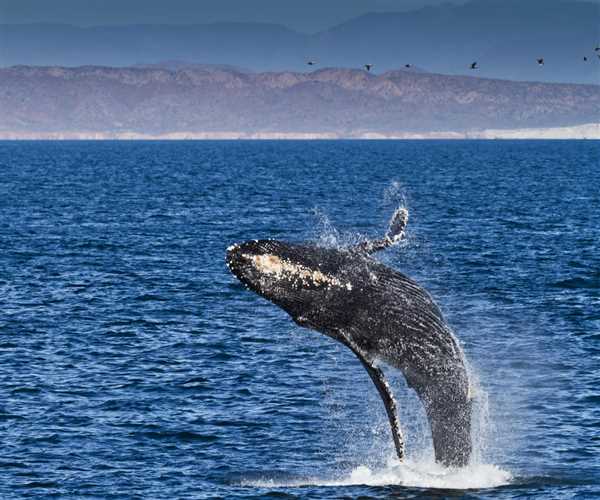The world's oceans are vast and deep, covering over 70% of the Earth's surface. Among them, one stands out as the largest - the Pacific Ocean. Spanning over 60 million square miles, it is so big that it covers more than one-third of the Earth's surface. The Pacific Ocean is also the deepest ocean, with the Mariana Trench reaching a depth of almost 7 miles.
The Pacific Ocean is home to a wide variety of flora and fauna. The ocean's diverse ecosystems, including coral reefs, kelp forests, and deep-sea hydrothermal vents, provide habitats for a wide range of species. These environments are home to a wide variety of species, many of which are found nowhere else on Earth
- Coral reefs, which are found in tropical and subtropical waters, are home to a diverse array of species, including fish, invertebrates, and algae. Some of the most well-known species found on coral reefs include clownfish, sea anemones, and parrotfish.
- Kelp forests, found in colder waters, provide habitats for a wide range of species, including sea otters, sea urchins, and various species of fish and seaweed.
- Deep sea hydrothermal vents, which are found in the deep ocean, are home to unique and unusual species such as giant tube worms, crabs, and snails. These species have adapted to the extreme conditions of the deep sea, and are able to survive in the high temperatures and pressures found near the vents. The ocean's vastness also plays a crucial role in regulating the Earth's climate, with its currents helping to distribute heat around the globe.

In addition to the species that live in these specific ecosystems, the Pacific Ocean is also home to many migratory species, such as whales and tuna. The ocean is also a major breeding ground for sea turtles and is home to several shark species.
However, many species living in the Pacific Ocean face threats from overfishing, pollution, and climate change. It is important that we take steps to protect and preserve these species and their habitats for future generations.
Many countries, including the United States, Canada, Mexico, and Peru, on the west, and Russia, Japan, and China on the east border of the Pacific Ocean. It also encompasses many island nations, such as the Philippines, Indonesia, and Australia. The Pacific Ocean has many important shipping lanes and is a major food source for many coastal communities.
The Pacific Ocean is also home to many natural resources, including oil, natural gas, and minerals. These resources have played a significant role in the economic development of countries bordering the ocean. However, the ocean's vastness also makes it vulnerable to pollution and overfishing, which can negatively impact the ocean's health and the communities that depend on it.
Overall, the Pacific Ocean is not just the biggest ocean in the world but also a vital part of our planet's ecosystems, climate, and economy. As we continue to explore and learn more about this vast ocean, it is important that we also work to protect and preserve it for future generations.